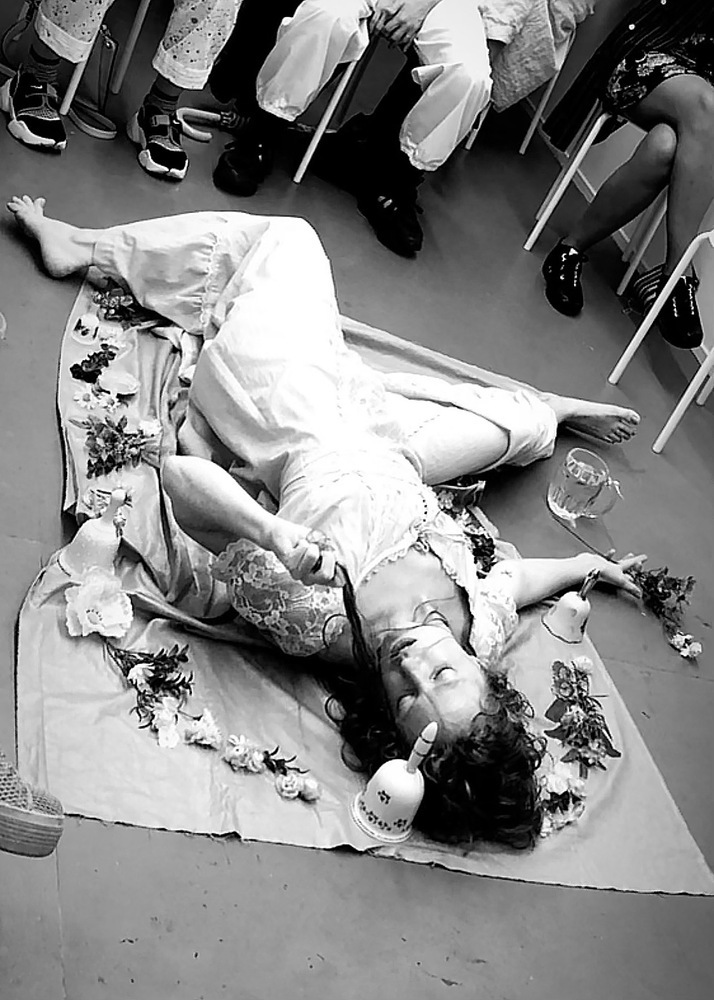
OPHELIA REPROGRAMMING
first performed on August 28, 2021
Essex Flowers, New York City, NY
performed twice in 2021
SUSANNAH SIMPSON
Durham, NC / Brooklyn, NY
599762999s599762999u599762999s599762999a599762999n599762999n599762999a599762999h599762999s599762999i599762999m599762999p599762999@599762999g599762999m599762999a599762999i599762999l599762999.599762999c599762999o599762999m
susannahsimpson.com
OPHELIA REPROGRAMMING
SUSANNAH SIMPSON
“Ophelia Reprogramming ‘’ was born from an ekphrastic poem I wrote in the heart of lockdown, responding to Millais’ iconic Ophelia painting—based on Shakespeare’s tragedy “Hamlet.” When The Moving Company offered the theme, “Summer Showers” for Flowers Fest 2021 at Essex Flowers, I felt called to make this piece into a performance, given Ophelia’s particular and charged relationship with water. In “Hamlet,” Ophelia’s death is by suicide via “madness,” drowning surrounded by flowers in riverbed’s flooded grasp. In my interpretation, Ophelia makes an informed choice, actively collaborating with the elements and spirits, trusting in an intelligence that eclipses the confines of the castle—with its barbs, hierarchy, and searing misogyny. When she lays down in the currents, she commits to a realm of being/unbeing more suited for her. “Death” is a spell to something else. For the performance, I created a riverbed of shimmering aquamarine fabric and an arch of multi-colored wildflowers, dotted in a constellation of white china bells. It began with me as Ophelia, laying in the water, in a long, cream lace gown—hair sopping and mouth agog—a la Millais’ rendition. The poem flowed through her from this position, and to beckon the beginning of the transcendence ritual, she gathered the bells in her hands and between her toes, ringing and kicking with them, to alert the spirits she was ready for her passage. Cue Enya’s banger classic, Only Time. Ophelia kissed and thanked all of the foliage that helped steward her, then rose from the river, lovingly shedding her old gown and bells. Rather than drown in the water, she drank it from two large glass mugs. Her dress laid exoskeleton-esque on the riverbed, she stood atop it in a sexy one-piece bathing suit, adorned in neon pansies. She let water drip from her mouth onto her body and the gown, blessing her previous iteration with intentional spit, and basking in the nutrients of new life. Finally, Ophelia placed a crown atop her head and opened a lavender fan, as she channeled the last verses of the poem. Here, she was the archetypal queen, in communion with an abundance of energies, instincts, and intelligence. Ophelia reprogrammed, celebrated and free to be. This performance was dedicated to Shakespeare’s daughter, Susanna.